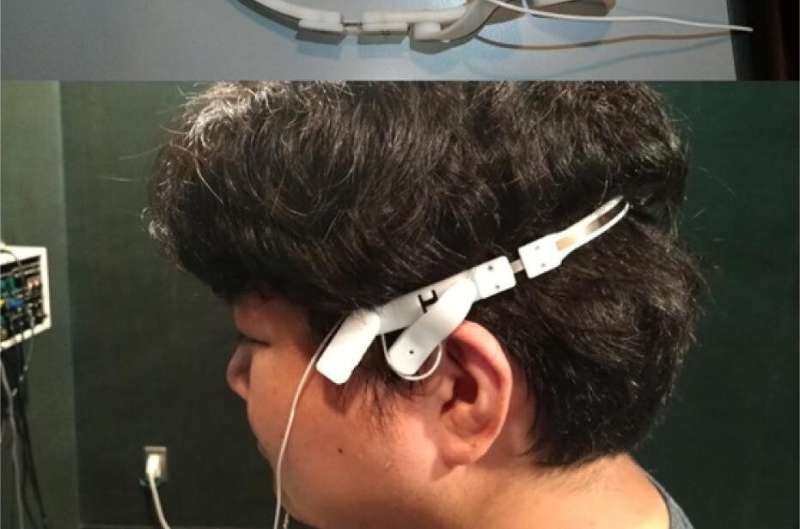This article has been reviewed according to Science X's editorial process and policies. Editors have highlighted the following attributes while ensuring the content's credibility:
fact-checked
proofread
Improving word intelligibility of bone-conducted speech using bone-conduction headphones

Bone-conduction (BC) headphones enhance hearing capability by generating vibrations in bone or skin close to the ear, including the regio temporalis. They simultaneously leave the ear canal open to allow the surrounding air-conducted (AC) sounds for normal hearing.
However, word intelligibility—recognition ability—is often poor during bone-conducted speech perceived using BC headphones due to the attenuation of its high-frequency components, especially under noisy conditions. While inserting ear plugs in the ear canal help improve the word intelligibility, it blocks the air-conducted speech.
Looking for alternative ways to address the problem of poor word intelligibility, a team of researchers led by Masashi Unoki, Professor at Japan Advanced Institute of Science and Technology, has recently proposed two methods for improving the intelligibility of BC speech with BC headphones.
Their work was published in Applied Acoustics. It is co-authored by Dr. Teruki Toya, Research Fellow at Kanazawa University, Dr. Maori Kobayashi, Professor at Aichi Shukutoku University, and Dr. Kenichi Nakamura of Westunitis Co., Ltd.
Since the bone conduction and speech signal characteristics for BC transmission are different from AC sound transmission, the researchers considered the modification of BC signals due to BC transmission pathways as a major factor affecting the speech intelligibility.

They identified two such transmission pathways and derived corresponding BC transfer functions—vibration of the regio temporalis (RT) and the sound radiated in the ear canal (EC), relative to AC speech sound. They then developed two methods for each of them, aiming to emphasize the higher-frequency components of BC signals.
"The two methods, first order high-frequency emphasis (FOE) and higher-order high-frequency emphasis (HOE), compensate the attenuation of high-frequency components of BC speech signals," explains Prof. Unoki.
Based on the transfer function and the emphasis method, the researchers obtained a total of four speech signal filters—RT-FOE, EC-FOE, RT-HOE, and EC-HOE. They tested these emphasis filters via Japanese word intelligibility tests with BC headphones in noisy environments and for listeners of different ages.
The results showed that BC headphones provided poor intelligibility of speech, especially for less familiar words under noisy conditions. However, the inverse transfer function between RT vibration and AC speech successfully compensated the attenuation of higher-frequency speech signals during BC transmission, improving BC speech intelligibility. "Specifically, the word recognition rate of BC speech filtered by RT-FOE was significantly higher than that with no emphasis," Prof. Unoki says.
The present study has numerous potential real-life applications, especially in BC-type hearing aids and auditory augmentation by BC headphones. "This is a basic study of BC speech perceptions. Hence, the findings of this work can help normal people as well as people with poor hearing in recovering speech recognition ability under noisy conditions. The enhanced auditory clarity in BC speech could also facilitate an interface to connect to cyberspace using BC headphones in the future," concludes Prof. Unoki.
More information: Teruki Toya et al, Methods for improving word intelligibility of bone-conducted speech by using bone-conduction headphones, Applied Acoustics (2023). DOI: 10.1016/j.apacoust.2023.109337




















